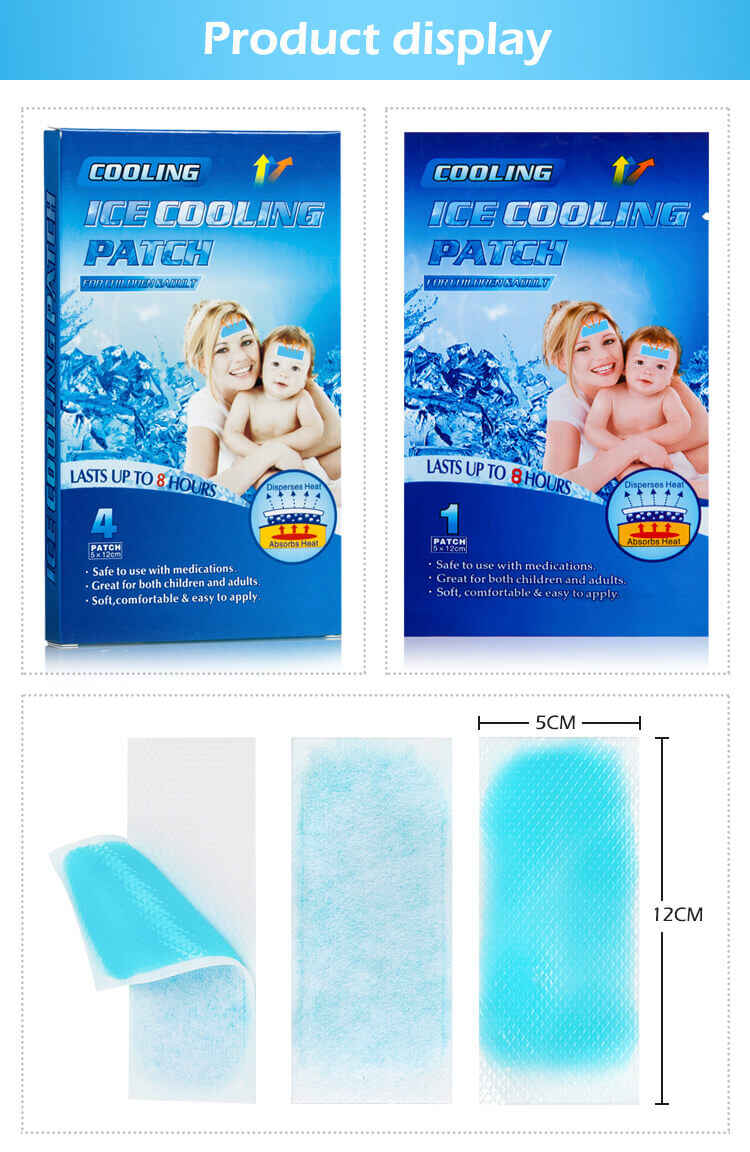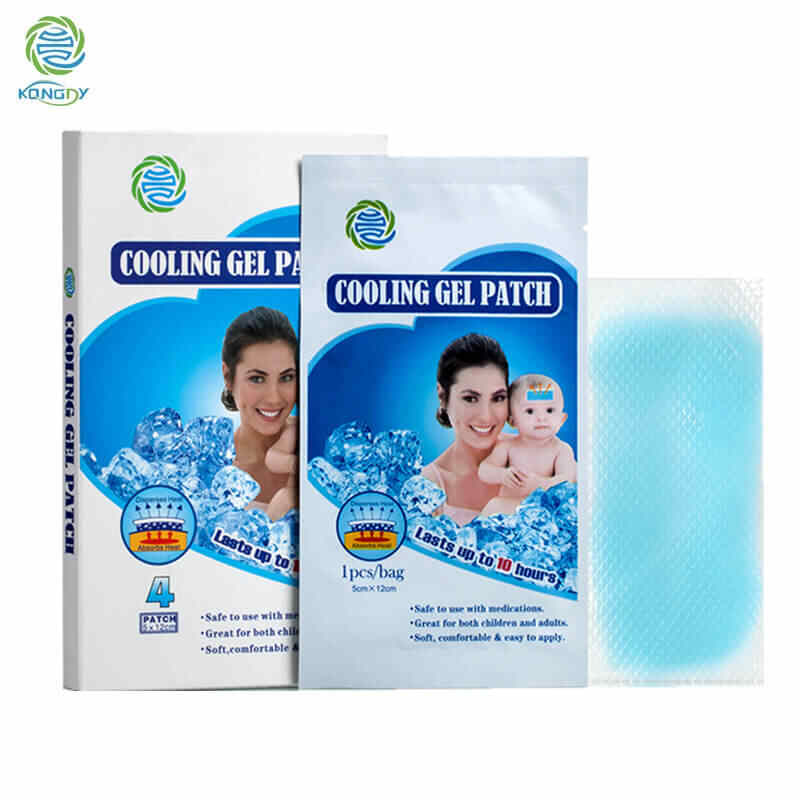What Makes OEM Better Than In-House Production for Fever Cooling Patches?
In the highly competitive health and wellness market, brands are constantly seeking ways to optimize their production processes without compromising on quality, compliance, or branding potential. For businesses in the fever cooling patch sector, a strategic decision often arises: Should you produce in-house or partner with a fever cooling patch OEM (Original Equipment Manufacturer)?
While in-house manufacturing might seem appealing for control and customization, partnering with a fever cooling patch manufacturer through OEM offers significant advantages in terms of cost-efficiency, scalability, compliance, expertise, and branding. This article explores why OEM is a superior model for producing custom fever cooling patches, especially for startups and expanding healthcare brands.

1. Cost Efficiency: Save on Infrastructure and Labor
✅ Eliminating Capital Expenditures
Setting up an in-house production facility requires a significant upfront investment in land, buildings, machinery, quality control systems, and labor. For fever cooling patches, this includes specialized equipment for hydrogel blending, non-woven fabric application, adhesive coating, and sterile packaging.
By working with a fever cooling patch OEM, brands can completely bypass these costs. The OEM manufacturer already has established infrastructure tailored to fever patch production, enabling your brand to launch faster with a significantly lower financial burden.
✅ Reduced Operational Costs
In-house production involves ongoing expenses: maintenance, raw materials procurement, skilled labor, R&D, and regulatory compliance. A fever cooling patch supplier handles these aspects efficiently due to economies of scale and established supply chains, ultimately reducing your operational costs per unit.
2. Access to Specialized Expertise and Technology
✅ Proven Manufacturing Know-How
OEM manufacturers specialize in fever cooling patch production and have refined their processes through years of experience. This ensures higher consistency, fewer product defects, and optimal product performance.
A fever cooling patch manufacturer with ISO, CE, or FDA certifications ensures that your product complies with international standards—something that might take years to establish in-house.
✅ Latest Formulations and Innovations
Leading fever cooling patch OEM providers stay at the forefront of product innovation. Whether it's developing patches with enhanced cooling duration, child-friendly adhesives, or eco-friendly materials, OEMs give your brand a technological edge.
Working with a custom fever cooling patch provider enables access to proprietary technologies and R&D that may otherwise be unavailable to in-house operations.
3. Faster Time to Market
✅ Streamlined Production Timelines
Setting up an in-house production facility can take 12–24 months, including construction, hiring, licensing, and test batches. OEMs, on the other hand, can start production almost immediately.
This rapid turnaround gives you a competitive advantage—especially crucial when launching a private label fever cooling patch under time-sensitive circumstances, such as flu seasons or public health emergencies.
✅ Scalability for Growth
OEMs offer scalable production capacities. Whether your brand needs 10,000 or 1 million units per month, a professional fever cooling patch supplier can quickly adjust output based on demand—without compromising on quality or delivery timelines.
4. Compliance and Regulatory Confidence
✅ Regulatory Ready
Global markets—especially the EU, US, and Japan—demand strict regulatory compliance. Fever cooling patch manufacturers are well-versed in certifications like ISO 13485, GMP, CE marking, and FDA registration.
By choosing a reliable fever cooling patch OEM, you avoid the headache of setting up your own regulatory team, which can take years to master.
✅ Transparent Documentation
OEMs provide Material Safety Data Sheets (MSDS), Certificate of Analysis (CoA), and batch traceability—vital documents for your quality assurance, product liability, and customs clearance. This ensures peace of mind as your product moves across borders.
5. Customization and Brand Identity
✅ Formulation Flexibility
A key misconception is that OEMs offer only generic, off-the-shelf products. In reality, most reputable custom fever cooling patch OEMs offer fully customizable formulations—varying cooling duration, herbal extracts, essential oils, and adhesive types.
You can co-develop your product with the OEM's R&D team, creating a formula that aligns with your brand’s health philosophy and customer needs.
✅ Private Label Packaging
Private label fever cooling patch options allow you to customize every aspect of your product—from patch size and shape to packaging design and language localization. This level of branding is difficult to replicate with in-house production unless you have a dedicated packaging and marketing division.
A fever cooling patch supplier offering private label services enables your product to stand out on retail shelves and online platforms.
6. Risk Mitigation and Business Focus
✅ Avoiding Production Pitfalls
In-house operations come with risks: machinery breakdowns, supply chain disruptions, failed batches, or regulatory fines. OEMs absorb much of this risk, as they have contingency plans, backup suppliers, and quality management systems in place.
This allows your brand to focus on sales, marketing, and customer engagement—the high-value areas that drive business growth.
✅ Lower Inventory Risk
Many fever cooling patch OEMs offer flexible order minimums, warehousing services, and even just-in-time production models. This reduces the need to tie up capital in large inventories, lowering financial exposure for your business.
7. Competitive Pricing and Market Advantage
By consolidating raw materials procurement, production, and packaging under one roof, OEMs can offer lower per-unit costs than in-house setups—particularly at scale. This enables your private label fever cooling patch brand to compete aggressively on price without sacrificing margins.
Moreover, OEMs often have market insights from working with global clients, helping you develop a more competitive product.
8. Strategic Partnerships with OEM Suppliers
Collaborating with a fever cooling patch OEM supplier isn't just transactional—it can be a long-term strategic partnership. OEMs often provide:
Market feedback and trend forecasts
Co-branding opportunities
Regulatory support for global expansion
Technical training and documentation
These value-added services can give your business a unique competitive edge.
Conclusion: Why OEM Is the Smart Choice for Fever Cooling Patches
Choosing an OEM over in-house production for fever cooling patches offers clear advantages: lower costs, faster market entry, higher product quality, regulatory compliance, and deep customization. With a reliable fever cooling patch manufacturer on your side, your brand can focus on innovation and growth rather than production headaches.
Whether you're launching a custom fever cooling patch or expanding a private label fever cooling patch line, working with an experienced fever cooling patch OEM supplier positions your business for sustainable success.
Related Questions and Answers
1. What is a fever cooling patch OEM?
An OEM (Original Equipment Manufacturer) produces fever cooling patches based on another company’s specifications, allowing the buyer to sell under their own brand.
2. How is OEM different from private label in this context?
OEM focuses on custom formulations and product development, while private label typically uses pre-formulated products with customized branding and packaging.
3. Is it more cost-effective to produce fever cooling patches in-house?
Usually not. In-house production involves high initial investments and ongoing operational costs. OEM is more cost-effective due to established systems and economies of scale.
4. Can I customize the ingredients in a fever cooling patch through OEM?
Yes, most custom fever cooling patch OEMs allow formulation customization, including herbal additives, cooling agents, and patch sizes.
5. Are OEM fever cooling patch manufacturers reliable for global distribution?
Leading OEMs comply with international certifications (ISO, CE, FDA) and offer regulatory support for export and global compliance.
6. What are the risks of using an OEM?
Risks may include over-dependence or IP concerns. These can be managed through contracts, audits, and partnering with reputable fever cooling patch suppliers.
7. How long does it take to launch a product through a fever cooling patch OEM?
Depending on customization, it may take 1–3 months for product development, testing, and packaging design—much faster than setting up in-house production.
8. Do OEM suppliers help with packaging and branding?
Yes. Most fever cooling patch OEM suppliers provide full private labeling services, including design, language translation, and regulatory labeling.
9. What should I look for in a fever cooling patch manufacturer?
Look for certifications (ISO, CE), manufacturing experience, R&D capabilities, MOQ flexibility, and responsiveness.
10. Can I switch from OEM to in-house production later?
Yes, but many brands continue with OEM even after scaling due to the convenience, cost savings, and ongoing innovation support.






